B-10 Export WH-2 / WAN
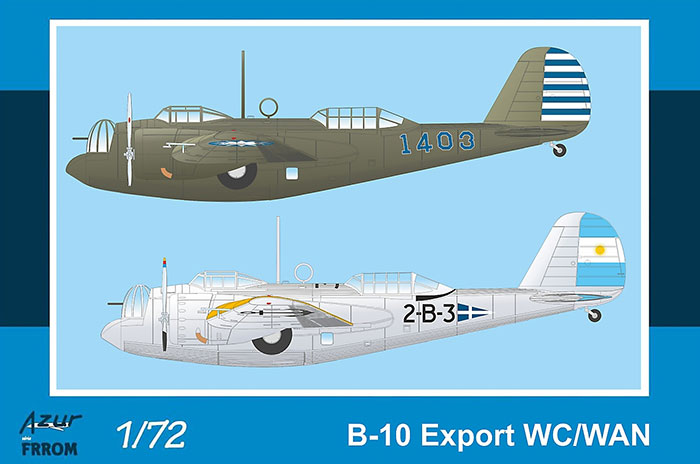
Azur FRROM, 1/72 scale
S u m m a r y : |
Catalogue Number: |
Azur FRROM Kit No. FR0043 - B-10 Export WH-2 / WAN |
Scale: |
1/72 |
Contents & Media |
91 parts in medium grey plastic (less 18 parts marked not for use); 15 parts in clear plastic; eleven photo-etched brass parts; decals for two marking options |
Price: |
£29.99 EU Price (£24.99 Export Price) plus shipping available online from Hannants |
Review Type: |
First Look. |
Advantages: |
High quality mouldings; good detail; nice surface textures; colourful and varied schemes. |
Disadvantages: |
Limited run nature will require a bit more attention. |
Conclusions: |
We were well overdue for a new 1/72 scale Martin B-10 and I am sure that this new Azur FRROM kit will be warmly welcomed by Yellow Wings and bomber fans.
This is a very nicely detailed kit of a groundbreaking bomber that saw service with a range of countries.
The limited-run nature of the kit means that it will be best suited to experienced modellers, but with time and care you will have an impressive and attractive result. |
Reviewed by
Brett Green

The B-10 began a revolution in bomber design. Its all-metal monoplane airframe, along with its features of closed cockpits, rotating gun turrets (almost simultaneously with the 1933 British Boulton & Paul Overstrand biplane bomber's own enclosed nose-turret), retractable landing gear, internal bomb bay, and full engine cowlings, would become the standard for bomber designs worldwide for decades. It made all existing bombers completely obsolete. Martin received the 1932 Collier Trophy for designing the XB-10.
The B-10 began as the Martin Model 123, a private venture by the Glenn L. Martin Company of Baltimore, Maryland. It had a crew of four: pilot, co-pilot, nose gunner and fuselage gunner. As in previous bombers, the four crew compartments were open, but it had a number of design innovations as well.
These innovations included a deep belly for an internal bomb bay and retractable main landing gear. Its 600 hp (447 kW) Wright SR-1820-E Cyclone engines provided sufficient power. The Model 123 first flew on 16 February 1932 and was delivered for testing to the U.S. Army on 20 March as the XB-907. After testing it was sent back to Martin for redesigning and was rebuilt as the XB-10.
The XB-10 delivered to the Army had major differences from the original aircraft. Where the Model 123 had Townend rings, the XB-10 had full NACA cowlings to decrease drag. It also sported a pair of 675 hp (503 kW) Wright R-1820-19 engines, and an 8 feet (2.4 m) increase in the wingspan, along with an enclosed nose turret. When the XB-10 flew during trials in June, it recorded a speed of 197 mph (317 km/h) at 6,000 ft (1,830 m). This was an impressive performance for 1932.
Following the success of the XB-10, a number of changes were made, including reduction to a three-man crew, addition of canopies for all crew positions, and an upgrade to 675 hp (503 kW) engines.
The Army ordered 48 of these on 17 January 1933. The first 14 aircraft were designated YB-10 and delivered to Wright Field, starting in November 1933, and used in the Army Air Corps Mail Operation. The production model of the XB-10, the YB-10 was very similar to its prototype.
As far as I am aware, the only injection moulded Martin B-10 was the 1/72 scale kit from Williams Brothers, originally released in 1974 and sometimes seen in new boxings in the intervening decades.
This was not a terrible kit by any means, but it was quite basic in detail and presented some fit challenges - notably the clear parts. After nearly half a century, a new kit was certainly due.
Azur FRROM now adds three brand new 1/72 scale limited-run injection moulded plastic B-10 kits to the market.
These are:
-
Kit No. FR0043 - B-10 Export WH-2 / WAN
-
Kit No. FR0042 - B-10 Export WH-2 / WAA and
-
Kit No. FR0044 - B-10B in US Service
These are not just three different marking options and box tops. Each subect is subtly different in the areas of the wings, nacelles, engines and fuselages. I will therefore review each kit separately.
The model under review today is Kit No. FR0043, B-10 Export WC / WAN. This aircraft was equipped with Wright Cyclone R-1820-G2 engines with a longer engine nacelle than other variants.
The kit comprises 91 parts in medium grey plastic (less 18 parts marked not for use); 15 parts in clear plastic; eleven photo-etched brass parts; decals for two marking options.
Moulding quality looks very good, with narrow sprue attachments and just a hint of flash here and there.
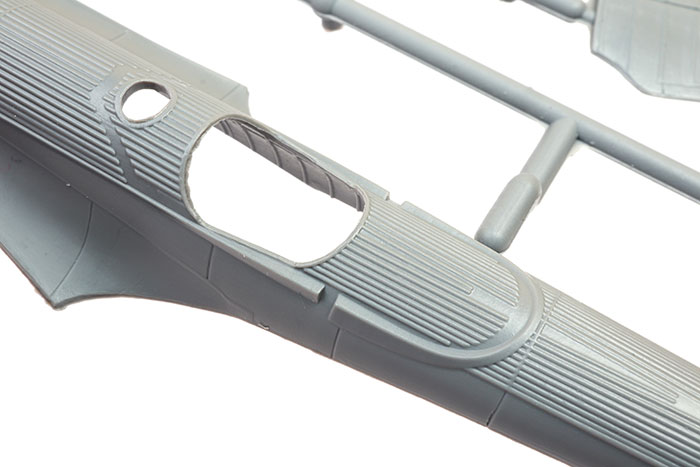
I particularly like the corrugated effect on the top and bottom of the fuselage, and the raised ribs on the flying surfaces. It is interesting that the fuselage halves are split into upper and lower halves. This thoughtful piece of planning means that you won't have to worry about restoring those nice corrugations along upper and lower joins.
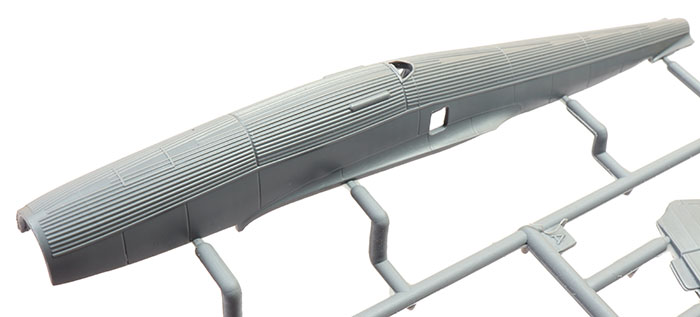
Being a limited run kit, we are not given the luxury of locating pins for the fuselage and smaller parts so some extra time and attention will be required for parts preparation, planning, alignment of parts (especially all those struts) and assembly.
Surface textures are really well done.
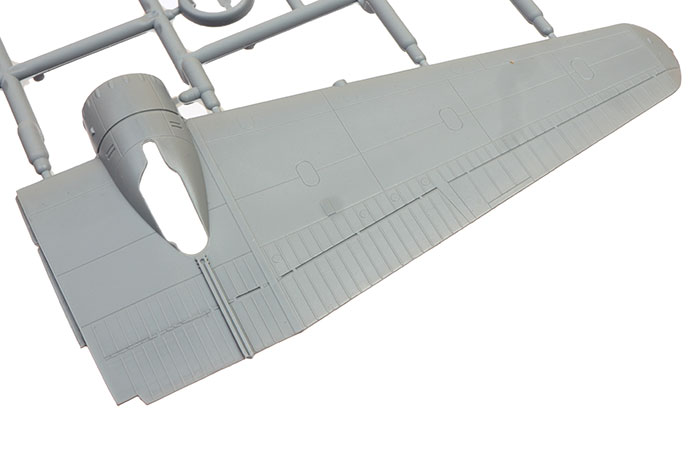
Cockpit and rear gunner's compartment detail is good with framework moulded onto the inside of the fuselage halves and harness straps supplied on the photo-etched fret. The instrument panels are plastic parts with decal dials. It is interesting that the gunner's position in the rear fuseage includes flying controls.
Photo-etched parts are also supplied for other detail parts.

The engines are supplied as one piece each, including crankcase, with a plastic mount at the rear.
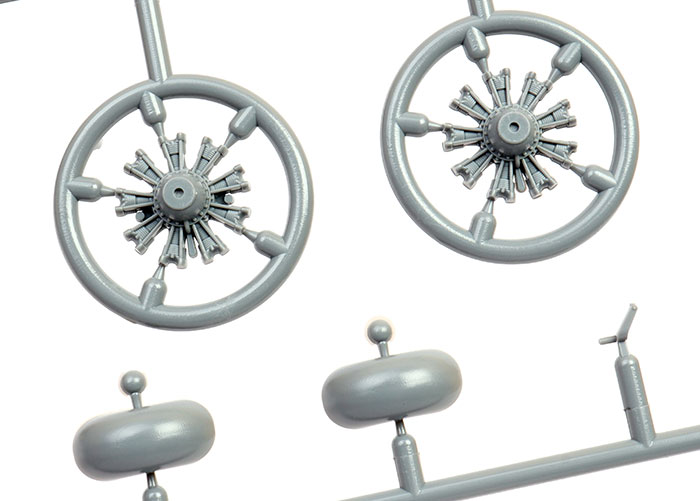
The wings are supplied conventionally, left and right upper and lower halves. Nice positive vertical spars are provided for the big wings.
A little surgery will be required for the engine nacelles if you choose Option A. In this case, blisters will need to be removed. I'd suggest starting with a new hobby blade then progressively finer sanding sticks to smooth the surface.
Alternative front nacelle rings are supplied depending on whether you are building the Chinese or Argentine option, so check the instructions carefully.
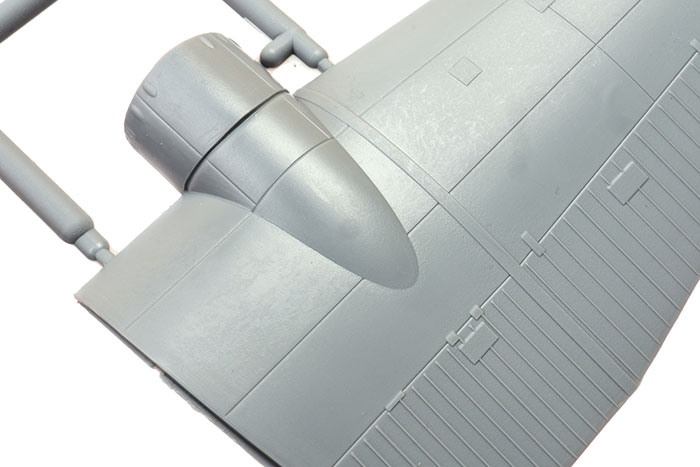
The two clear sprues are well moulded.
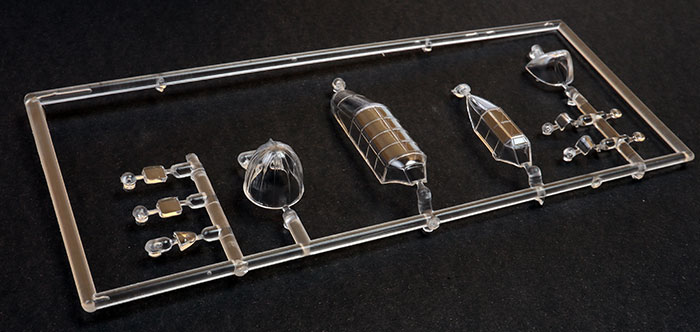
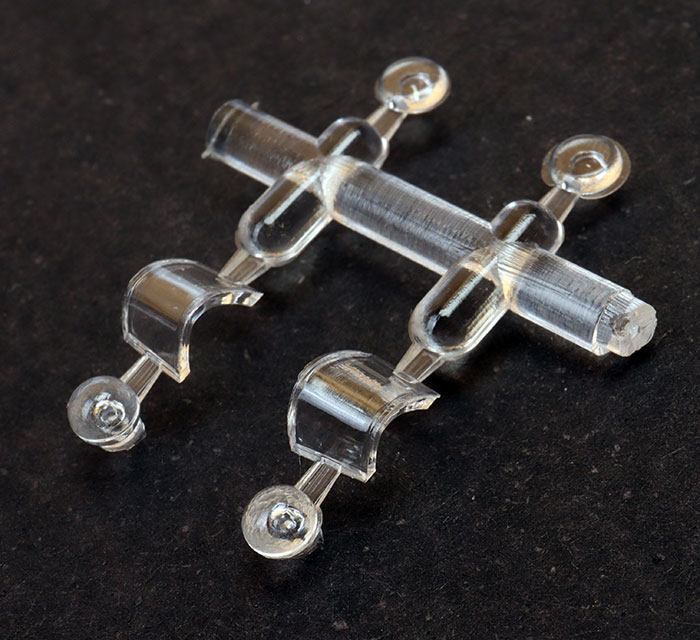
I note that Special Hobby already has a masking set for the glasshouse canopy. I would recommend this as a time-saving essential.
Colours & Markings
Markings are supplied for two varied subjects:
-
B-10 Export WC in service with China, in 1937, probably 1403 with 14th Volunteer Sqn. This aircraft undertook a leaflet bombing mission over Japan and is finished in overall Dark Green.
-
B-10 Export WAN, Argentine Navy, probably 2-B-3, February 1939. This aircraft is finished in overall Aircraft Grey with Orange Yellow upper wings and blue-white-blue Argentine markings on the tail surfaces.
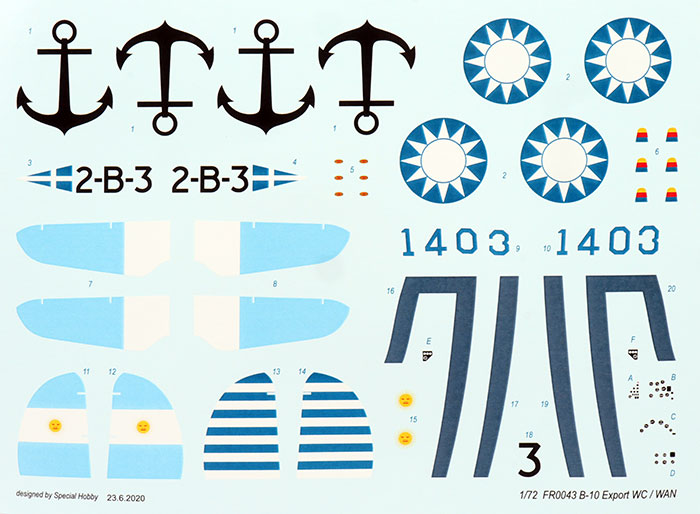
Wing walks, prop logios and propeller tip markings are supplied on the sheet. The decals are well printed, glossy and in register.
We were well overdue for a new 1/72 scale Martin B-10 and I am sure that this new Azur FRROM kit will be warmly welcomed by Yellow Wings and bomber fans.
This is a very nicely detailed kit of a groundbreaking bomber that saw service with a range of countries.
The limited-run nature of the kit means that it will be best suited to experienced modellers, but with time and care you will have an impressive and attractive result..
Thanks to Azur FRROM for the review sample.
Review Text & Images Copyright © 2020 by Brett Green
Page Created 30 November, 2020
Last updated
2 December, 2020
Back to HyperScale Main Page

|
